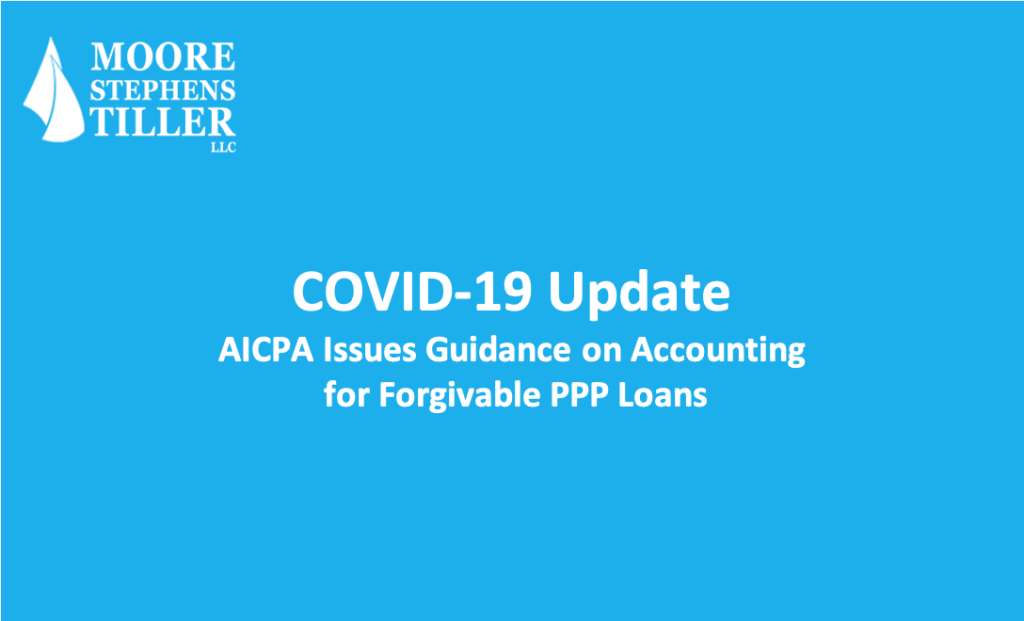
While Paycheck Protection Program (“PPP”) loans continue to provide a vital source of liquidity during the economic crisis caused by COVID-19, many companies have begun to ask questions regarding the proper accounting treatment for those loans under U.S. GAAP. The AICPA consulted with its members as well as the Financial Accounting Standards Board and issued guidance this week on how to account for forgivable loans under the PPP (the guidance can be found in AICPA Technical Question and Answer 3200.18).
PPP loans are legally structured as debt in the form of a promissory note. However, their forgivable nature combined with the expectation of many companies that their loans will ultimately be forgiven, led to questions as to whether they could be accounted for similar to government grants. The conclusion the AICPA reached this week is that it would be acceptable for companies to account for the loans under either debt guidance (found in ASC 405 Liabilities and ASC 470 Debt) or under guidance for governmental grants based on the expectation that the PPP loans will be forgiven (found in ASC 958-605 Not-For-Profit Entities Revenue Recognition or ASC 450-30 Gain Contingencies).
The primary difference between the two methods is whether income from the PPP loan is recognized at the end of the process when the loan is officially forgiven or during the term of the loan as the related expenses are incurred.
If a company elects to account for the loan under the debt provisions, funds received under the PPP would initially be recorded as a liability (note payable). At the time that the company receives approval for forgiveness under the PPP, it would remove the note payable from its balance sheet and record a gain on extinguishment of debt.
If a company elects to account for the loan as a governmental grant, funds received under the PPP would still initially be recorded as a liability (deferred revenue or a refundable advance). When the company believes there is reasonable assurance the conditions of the grant are met and the loan will be forgiven, the earnings impact of the grant are to be recognized on a systematic basis over the same period in which the company recognizes expenses related to the PPP.
The difference in the two methods would have the greatest impact on companies whose fiscal year end falls during the period where the PPP loan is still outstanding (June 30 for example); however, it could impact companies with a December 31 year end for loan covenants or other required reporting to lenders during fiscal year 2020.
Under either method, companies should record interest at the rate stated in the note while the PPP loan remains outstanding.
Our firm is continuing to monitor changes in the terms of the Paycheck Protection Program as well as guidance from accounting standards setters (AICPA, FASB, IASB, and SEC) and the tax implications of the PPP. Please feel free to contact us if you have questions.
